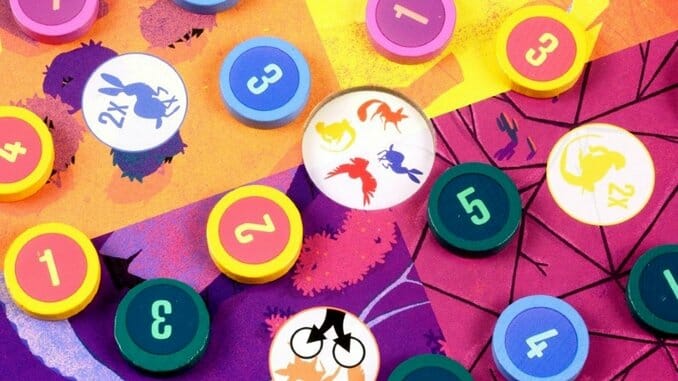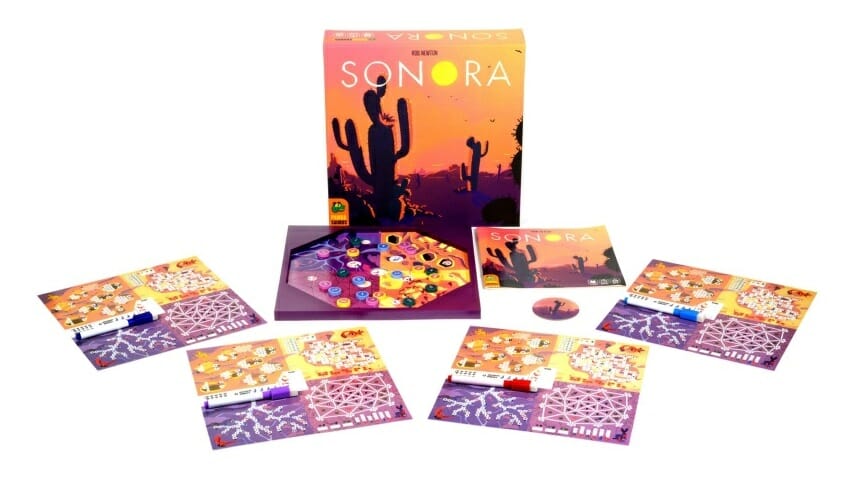Sonora Introduces a New Type of Board Game: The Flick-and-Write
Art courtesy of Pandasaurus Games
You’ve probably played, or at least heard of, roll-and-write games like That’s Pretty Clever, where players roll dice and use the values shown to mark off certain spaces on their individual scoresheets. Those spawned flip-and-write games, like Welcome To…, where the dice are replaced by decks of cards that are shuffled each game and revealed one or more at a time. Now we have the flick-and-write game with Sonora, where players flick numbered discs on to a board and mark off spots on their scoresheets based on where they land—but, unlike any other games in this space, you can bump other players’ discs if you find they’re in your way… or if you’re just feeling a bit spiteful.
Players in Sonora each get five discs in their chosen colors, numbered 1 through 5, and will flick them all on to the board in each of the game’s rounds, with six rounds forming a standard-length game. You may choose to flick your discs in any order you’d like, with players going around the table, flicking two at a time in the first two turns and the fifth one on the last turn. The board itself has four quadrants corresponding to the four areas of the scoresheet, each of which gives you a specific action to take with your discs that are there once everyone has done their flickin’. There are also eight smaller bonus circles around the board that let you double the value of a disc or score it twice in its area, and there’s a small, recessed area in the center that lets you take your disc off the board (so nobody can knock it to another space) and score it for any quadrant you like.
The scoring part of the game is a bit more involved. The top left quadrant, represented by the lizard symbol, has several clusters of hex spaces that score when you complete them; you add up the values of your discs in the lizard area of the board and then mark off that many spaces in any way you choose. The top right quadrant, represented by the fox, has a large grid with many spaces that contain three types of cactus or various bonus symbols. You score each disc separately here, tracing a specific polyomino shape on the grid and gaining credit for whatever you’ve encircled. The more of each type of cactus you’ve covered by game-end, the higher your points total, with a benefit to gaining more of a single type than balancing across all three.

-

-

-

-

-

-

-

-

-

-

-

-

-

-

-

-

-

-

-

-

-

-

-

-

-

-

-

-

-

-

-

-

-

-

-

-

-

-

-

-








































